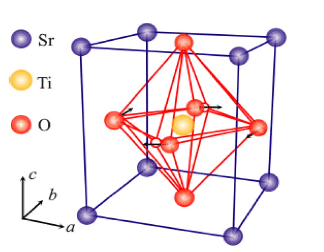The ferroelectric properties of strontium titanate have been successfully controlled.
The work has been published in the Journal of Alloys and Compounds. At the intersection of science and technology, modern research in materials science is opening new horizons. One of the unique materials is strontium titanate. This perovskite is characterized by exceptionally high dielectric permittivity at low temperatures, making it suitable for the creation of capacitors, sensors, and other devices. Its unique properties can be modified, for instance, through chemical doping to alter its structure.
Strontium titanate is widely used in modern electronics and can be beneficial in the development of new microelectronic devices. Its strengths include high dielectric permittivity and low dielectric losses, meaning it can effectively store large electrical charges. Furthermore, SrTiO3 retains its attractive dielectric properties in the microwave range, making it an ideal material for various applications, such as telecommunications systems and microelectronics components.
A recent study conducted by a team of scientists revealed interesting aspects of the quantum paraelectric behavior of thin films of SrTiO3 doped with transition metals—manganese (Mn), iron (Fe), nickel (Ni), and cobalt (Co). By employing pulsed laser deposition, the researchers were able to produce films with a thickness of 150 nanometers and analyze their properties using terahertz spectroscopy.
Pulsed laser deposition (PLD) is a method for applying thin films of materials onto substrates using laser radiation. The essence of this method lies in directing a powerful laser pulse onto a target material, referred to as a "target" or "powder." The laser radiation rapidly heats the surface of this material, resulting in its evaporation (or ablation). The released atoms or molecules in the form of gas or plasma are deposited onto the substrate, forming a thin layer.
The experiment investigated how the addition of just two atomic percent of transition metals affects the dielectric properties of strontium titanate.
One of the key findings of the study was the identification of a so-called ferroelectric "soft mode" in the terahertz spectra. The soft mode is a specific type of atomic vibrations in the material (phonons) that can be studied using terahertz spectroscopy, which utilizes frequencies ranging from a few cm-1 to 100 cm-1 and temperatures from room temperature (300 K) to helium temperature (4.2 K).
The ferroelectric soft mode is a special type of vibration within the material's structure that is responsible for the formation of its ferroelectric properties. In experiments with strontium titanate, scientists found that these vibrations behave differently in thin films and nanoceramics compared to bulk crystals.
In this study, the researchers discovered that the dielectric contribution and the frequency of the soft mode behave as predicted by Barrett's model when the temperature decreases. This indicates that the material's properties change with decreasing temperature, but with certain unusual characteristics—the system, while striving to transition to a ferroelectric state, does not undergo a ferroelectric phase transition. As a result, the crystal enters a quantum regime, and the dielectric permittivity reaches ultra-high values, which is extremely interesting for applications in cryoelectronics.

The researchers also found that mechanical stresses in the films can be altered due to the different thermal expansion coefficients of the film materials and the substrate. With appropriate stretching (or compression), the material's properties can change significantly, allowing manipulation of its ferroelectric properties and even increasing the phase transition temperature to higher values.
"The study revealed a complex relationship between the structure of strontium titanate films and their dielectric properties," said Boris Gorshunov, head of the terahertz spectroscopy laboratory at MIPT. "Understanding such relationships could lead to the creation of a new class of functional materials, which in turn would accelerate the development of microelectronics."
The research was funded by the Russian Science Foundation.